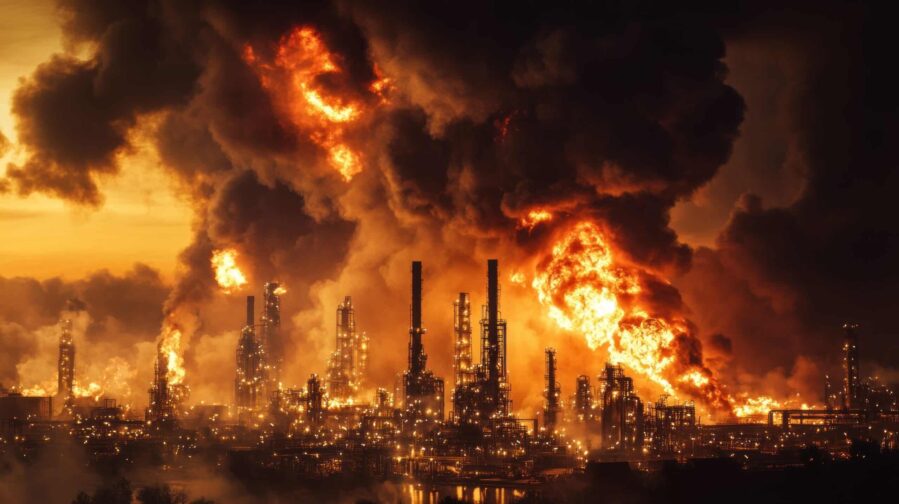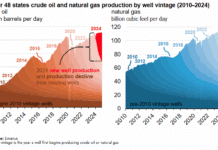
Ukrainian drone strikes on Russian refineries are expected to suppress Russia’s oil processing capacity until at least mid-2026, according to the International Energy Agency (IEA). Since August, Ukraine has launched at least 28 strikes, leading to gasoline shortages and forcing Russia to restrict fuel exports. These attacks have cut Russian refining by an estimated 500,000 barrels per day, reports Bloomberg. In response, Russia increased crude exports to 5.1 million barrels per day in September, but oil export revenues still dropped to a three-month low of $13.4 billion. The decline, particularly in refined products, adds financial pressure as Russia continues to fund its war in Ukraine. Bloomberg News reports:
The impact from Ukrainian drone strikes will suppress Russia’s refinery processing rates until at least mid-2026, the International Energy Agency says in its latest monthly oil-market report.
Kyiv has been intensifying attacks on its foe’s energy infrastructure — including oil refineries, pipelines and sea terminals — in a move to cut the Kremlin’s energy revenue and reduce its ability to supply fuel to the front lines. […]
“The increasingly widespread and significant Ukrainian drone campaign against Russian oil refineries and infrastructure” has so far cut the nation’s crude processing by an estimated 500,000 barrels a day, the agency said. […]
With the drone strikes weighing on refinery runs, Russia raised its crude exports in September to 5.1 million barrels a day, the highest since May 2023, according to the IEA. Still, the nation’s oil-export revenues declined to a three-month low of $13.4 billion, the agency estimated.
The decline came as Russia’s crude-supply revenues, which rose $200 million month-on-month, were more than offset by a $440 million drop for oil-product exports, the report said. […]
The drop in oil-export revenue is set to strain Russia’s state coffers as Moscow continues to spend heavily to finance the fourth year of the war in Ukraine. The government already expects oil and gas flows into the budget this year to be the lowest since the pandemic.
Read more here.



